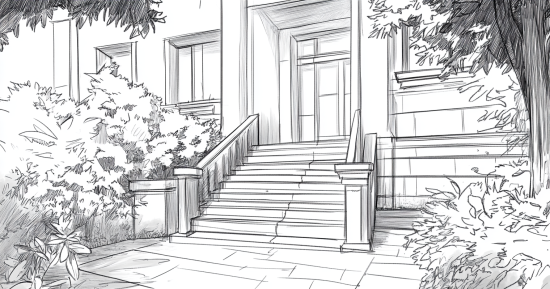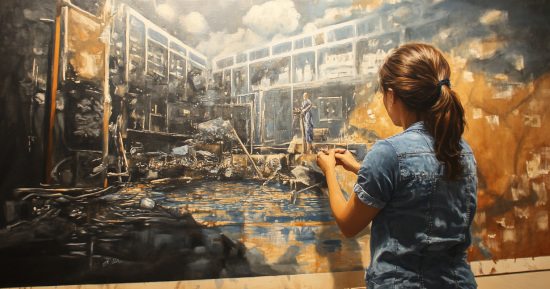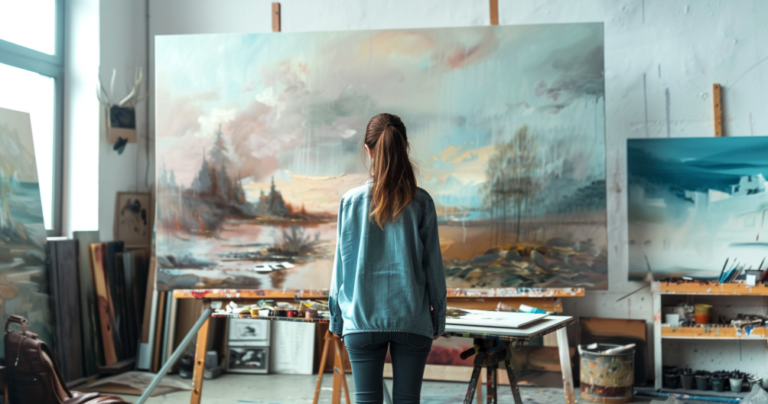Have you ever looked at a painting and felt a sense of harmony? That’s balance in art at work. It’s not just about making things look pretty – balance is a fundamental principle artists use to create visually appealing and engaging compositions.
Balance in art refers to the distribution of visual elements to create a sense of equilibrium and stability in a composition.
What Does Balance Mean in Art
When you look at a balanced artwork, your eyes are naturally drawn to different areas without feeling overwhelmed or confused. This doesn’t mean everything has to be perfectly symmetrical – artists can use various techniques to achieve balance.
You might be surprised to learn that there are actually different types of balance in art. From the classical symmetry of Renaissance paintings to the dynamic asymmetry of modern abstract works, each approach can evoke unique feelings and responses in viewers. Understanding these concepts can deepen your art appreciation and even inspire your creative endeavors.
Understanding Balance in Art

Definition and Importance
Balance in art refers to the distribution of visual elements to achieve equilibrium in a composition. It’s one of the fundamental principles of design that artists use to create aesthetically pleasing works. When you look at a balanced piece, you’ll feel a sense of order and stability. This quality helps guide your eye through the artwork and enhances your viewing experience.
Balance is essential because it can evoke different emotions and convey specific messages. A well-balanced composition feels complete and satisfying, while an intentionally unbalanced work can create tension or drama.
Types of Balance
There are several types of balance you’ll encounter in art:
- Symmetrical balance: Also known as formal balance, it creates a mirror-like effect with equal visual weight on both sides.
- Asymmetrical balance: This informal type uses different elements to achieve equilibrium without exact mirroring.
- Radial balance: Elements radiate from a central point, creating a circular balance.
- Crystallographic balance: A pattern-based balance that repeats elements across the composition.
Each type of balance offers unique visual effects and can be used to convey different moods or ideas in artwork.
Principles of Design
Balance works in conjunction with other principles of design to create compelling artwork.
These principles include:
- Contrast: The use of opposing elements to create visual interest
- Movement: Guiding the viewer’s eye through the composition
- Rhythm: Creating a visual tempo or pattern
- Emphasis: Highlighting key elements in the artwork
- Unity: Ensuring all parts of the composition work together
When you understand these principles, you’ll be better equipped to analyze and appreciate art.
You’ll notice how artists combine balance with other design elements to create powerful visual experiences. By mastering balance and other design principles, you can enhance your artistic creations or deepen your appreciation for the artworks you encounter.
Applying Balance in Artistic Composition

Visual Weight and Equilibrium
- Visual weight refers to the perceived importance or heaviness of elements in your composition.
- To create equilibrium, distribute visual weight evenly across your artwork.
- Consider size, color intensity, and complexity when assessing an element’s visual weight.
- Large objects typically carry more visual weight than smaller ones. Bright, saturated colors often appear heavier than muted tones.
- Complex patterns or textures can also increase an element’s perceived weight.
You might pair a large, simple shape with several more minor, detailed elements to balance your composition. Or, you could offset a bright, bold area with an enormous expanse of neutral tones. Experiment with different arrangements to find what feels suitable for your piece.
Symmetry and Asymmetry
- Symmetrical balance creates a sense of order and stability in your artwork. It occurs when elements are mirrored on either side of a central axis.
- This approach can be visually pleasing but may sometimes feel static or predictable.
- Asymmetrical balance, on the other hand, creates tension and visual interest.
- You achieve it by arranging dissimilar elements in a way that feels balanced despite their differences. This technique often results in more dynamic compositions.
- Try combining symmetry and asymmetry in your work.
You might use a symmetrical overall structure but incorporate asymmetrical details within it. Or, create an asymmetrical composition with small areas of symmetry to add visual anchors.
Color, Texture, and Pattern
Color plays a crucial role in balance. Warm colors like reds and yellows tend to advance visually, while cool colors like blues and greens recede.
Use this knowledge to create depth and balance in your compositions.
- Texture adds visual weight and interest to your artwork.
- Rough or highly detailed textures often appear heavier than smooth ones.
- Balance areas of high texture with simpler, less textured regions to create harmony.
- Patterns can be powerful elements in your composition. Repetitive patterns can create rhythm and unity, but please be careful not to confuse your artwork.
Balance patterned areas with solid colors or simpler textures to maintain visual interest without chaos.
Creating Focal Points
Focal points are areas of emphasis in your composition that draw the viewer’s attention. Use contrast in color, size, or detail to create effective focal points.
- A bright spot amid muted tones or a detailed area surrounded by simplicity can serve as a strong focal point.
- Position your focal points strategically to guide the viewer’s eye through your artwork.
- The rule of thirds is a helpful guideline – imagine dividing your canvas into a 3×3 grid and placing key elements along these lines or at their intersections.
- Use secondary focal points to create balance and prevent your composition from feeling too static.
These can be smaller or less prominent than your main focal point but still draw the eye and create interest throughout the piece.
Frequently Asked Questions
How can you identify balance in artwork?
Look for an even distribution of visual weight across the composition. Notice if elements on one side seem to counterbalance those on the other.
Pay attention to placing shapes, colors, and forms within the piece.
You can also step back and squint at the artwork. This helps you see the overall arrangement without getting caught up in details.
What are some standard techniques for achieving balance in a composition?
Artists often use symmetrical balance to create a mirror-like effect.
They may also employ asymmetrical balance, distributing different elements to achieve equilibrium.
Other techniques include radial balance, where elements radiate from a central point, and crystallographic balance, which uses repeating patterns.
Why is balance important in the visual arts?
Balance creates a sense of stability and harmony in artwork. It helps guide the viewer’s eye and prevents one area from dominating the composition.
When a piece is well-balanced, you feel a sense of completeness and resolution. Unbalanced works can create tension or discomfort, which may be intentional depending on the artist’s goals.






